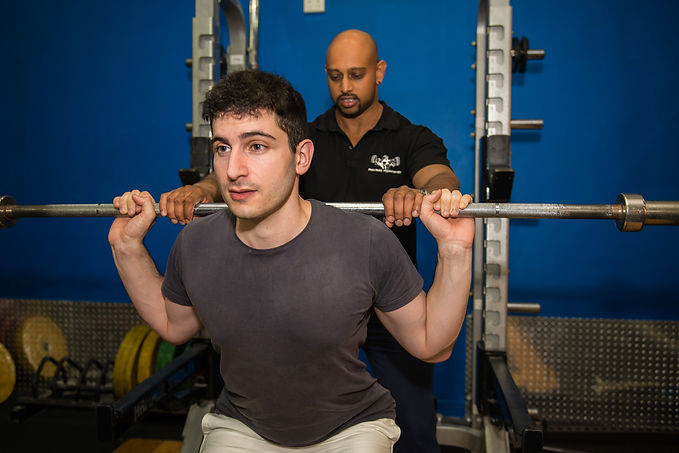Strength sports have become more popular and common in recent years, with many people putting less emphasis on how their body looks, but how it performs and looking at what it can do from a strength point of view. Whether you’re training for powerlifting, sprinting or just trying to carry all the grocery bags in from the car in one run, unilateral or single arm and leg strengthening is paramount and this article will explain why.
Looking at a sport like powerlifting which is compromised of three movements, being squat, bench press and deadlift – all the movements are performed by either both the arms or both the legs or in some cases requiring use of both arms and both legs simultaneously. While the aim of the sport is to lift the maximum amount of weight for each movement, it makes sense to use two arms instead of one or two legs instead of one. After all, the more muscles fibres we can recruit, the more weight we can add to the bar and lift.

However, while this can be a huge advantage in the sport of powerlifting, it masks the deficiency or weaknesses in the individual components and muscle groups that cannot keep up with the whole body system. While this might not be noticeable or prominent at training with lighter weights, strength discrepancies can definitely show at higher weights, for example when we are going for a one rep max. Importantly, this is not the time to address strength deficits in muscle groups, but it should be before we squat, bench or deadlift maximal weights. The saying is ‘prevention is better than cure.’
Imbalances in muscle groups can cause technique to break down pre-lift, mid-lift or even at lock-out, which can lead to injuries. It can also cause asymmetry in the movement itself, putting more pressure and load on one side of the body further leading to injury.
Single arm and single leg accessory strengthening exercises should always accompany a powerlifting program. These exercises might be a flat dumbbell press, a landmine press, a Bulgarian split squat or a single-leg leg press, as a few examples. By performing these movements, we are able to identify if one side is lagging or cannot keep up with the other side.

Another common power sport is sprinting where although the movement is not performed in a simultaneous bilateral fashion, it still requires equal force production from both sides of the body to propel the body forward in symmetrically. Failure or weakness in certain muscle groups would mean that once again those muscle groups cannot keep up with the system as a whole which can put undue stress on these muscles at high velocities, resulting in muscle tears and strains. Common muscle groups in sprinting that are torn or strained tend to be the glutes, hamstrings and calf.
These are just two strength and power sports where it is important to strengthen the arms and legs in a unilateral fashion, as well as performing the movement itself, but there are many more. It is important to note that while we persevere in closing the gap and strength discrepancies between left and right, there might always be one side that has a slight edge over the other. The important thing is we try to reduce this divide and subsequently reduce that chance of injury down the track!
We are excited to help you achieve your health and wellness goals. Please note that all appointments are subject to availability. Our team will review your request and get back to you within 24 hours to confirm your appointment. Thank you for choosing PowerBuild Physiotherapy.”
We are excited to help you achieve your health and wellness goals. Please note that all appointments are subject to availability. Our team will review your request and get back to you within 24 hours to confirm your appointment. Thank you for choosing PowerBuild Physiotherapy.”